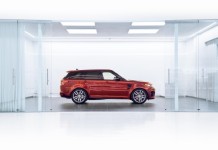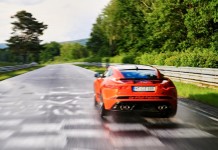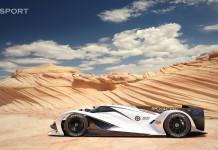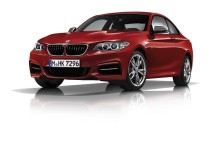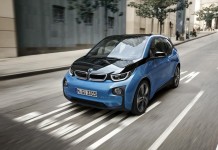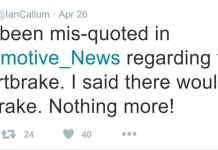There is a complex that occurs within puppies of large breed dogs. It happens when their bodies and muscles grow faster than their temperaments can keep up. What results is a large and strong fast-moving animal with the mannerisms of a hyperactive child who also doesn’t truly realize just how large he really is. This huge puppy complex isn’t only exclusive to the animal kingdom as it makes the perfect metaphor for the 2011 Jaguar XJL.




Dating all the way back to 1968, the XJ name holds the most prestige among the Jaguars as it has always been the largest of the four door models. For those forty-some years, the XJ has gone through numerous alterations and powertrains but for the most part, its outward appearance stayed the same. That is until 2009 when the current generation debuted and changed the history books with a truly unique look for Jaguar’s flagship. Gone are the dual headlamps and flat front and in their place is a tear-drop shape that resembles a lengthened XF. Designed by a team led by Ian Callum, the XJ shares his similar vision that spawned the rest of the current Jaguar line-up: the XK and XF.



Our time spent with the largest Jaguar was done so with the non-supercharged XJL. Riding on the longer 124.3 inch limousine wheelbase, the L’s unibody is made primarily from aluminum and thus weighs in at approximately 3,900 lbs. That is much lighter than its biggest competitor, the BMW 740Li which we test drove a few weeks prior to driving the XJL. However, when you cut deep down below all of that aluminum, the current generation XJ still uses a heavily modified version of the previous generation car which began production in 2003. Starting MSRP for the XJL is $79,700, which is about five grand more than the base price for a 740Li. Standard features include beautiful 19 inch wheels, Xenon LED lights with adaptive movement, a dual panoramic glass roof and a navigation system with an 8 inch touch screen. The only options for our tester were the $2,300 Bowers and Wilkins 1200 watt surround sound system, $500 wood and leather steering wheel, $375 heated front windshield and the $850 visibility package with backup camera. This brought our Vapor Grey XJL to $84,600 including destination.

The 2011 XJL is built exclusively at the Castle Bromwich, United Kingdom plant. It came as a big surprise that this Jaguar is actually a Jaguar and not a heavily modified Ford. No longer under the control of the blue oval, most of the components were built in house by Jaguar England. The new 5.0 liter DOHC naturally aspirated V8 makes a stout 385 horsepower and 385 lb-ft of torque which trumps the 740Li’s turbocharged 315 horsepower. Matched to six speed automatic with manual shift mode, the XJL felt faster than the BMW in more ways than one. The big displacement V8 gave off much better throttle response and stronger passing power no matter what the speed compared to the 7. It also simply sounded faster. Where the BMW makes an engineered mechanical noise, the Jaguar emits nothing but pure, organic muscle that would make any NASCAR fan proud. There are even pops and crackles from the exhaust if put in sport mode which will always bring a smile. And unlike the BMW, it does all this while not intruding into the cabin. For being built in-house by Jaguar themselves, this engine is absolutely fantastic.

What’s even more fantastic is how the XJL carries itself. This is where the previously mentioned “puppy complex” comes into play. Once the driver figures out how to put the strange, dial-knob shifter into manual shift mode and hits the “Dynamic Handling” button, the Jaguar simply morphs. It forgets how big it is and acts like a puppy that was just fed some Scooby snacks. The digital gauges become red and the chassis stiffens to keep the body absolutely flat on back roads all while the engine surges to red line with exceptional ease. There is no confusion between the front suspension and the steering wheel as the XJL tells a driver exactly what is happening. This is where the Jag trumps the BMW in a big way as its steering feel is very well perfect. Where the 7 felt odd and offensive due to its electric control, the Jaguar felt just right: sharp and crisp no matter what the speed or situation. And even though the transmission’s shifts are a little on the rough side compared to the 740Li, its responses were just as sharp. The XJL acts so small dynamics wise that a driver can become baffled when they step out to see its actual size.


No amount of chassis engineering can mask the L’s absolutely massive length. At 206 inches, the XJL is six inches longer than a Nissan Quest Minivan and nearly 30 inches longer than a Ford Focus. This made parking interesting as the Jag never felt that long and thus never actually fit completely into a spot. There would always be a little bit of this limo sticking out of or into another spot and parking far away is almost a must. However, there are benefits to this length as the rear seating area becomes a place of envy. Both rear seats get heating and cooling options, which were not see on our 740Li tester and passengers mentioned that the XJL was overall roomier than the BMW. The Jet/London Tan leather interior, which resembles the color of peanut butter, beats the BMW’s for looks. Aesthetics wise, the Jaguar carries much more swagger on the inside as everything looks and feels much more eccentric. It is a disappointment however to see the very understated and humble exterior. Flying under the radar is a huge selling point for these muscle car-worthy luxury cruisers, but sometimes a driver wants just a little more flash.



Despite looking fantastic on the inside, all the leather wrapping and wood grain in the world can’t fix the Jaguar’s biggest flaw: its entertainment system. The touch screen control panel, which operates the navigation, stereo controls and auxiliary integration needs to be revamped if the XJL ever plans to beat its competition. The input is slow and unresponsive and more times than not, the satellite radio stations would arrive seconds after they were called upon. And with too many menus and sub menus for auxiliary media, this driver actually had to consult the owner’s manual to operate the iPod integration. The BMW’s controls were by no means easy but compared to the Jag’s, they were worlds better. The actual sound from the stereo also didn’t even come close to the output of the BMW’s.

At the end of the day, the 2011 Jaguar XJL isn’t as developed or refined as the BMW 740Li. It may lack the controls and long distance comfort of the BMW, but the Jaguar isn’t a bad car. If the competition was left exclusively to the back roads, the XJL would leave the 740Li far behind. Its steering feel is fantastic and the handling is so sharp that the Jaguar never revealed to the driver how big and heavy it really is. On top of that, the L’s engine beats the BMW’s straight six while only suffering two miles per gallon with an average of 18 mpg compared to 20. The Jaguar also offers more standard features than the BMW and carries them in a much more elegant fashion. Where the German feels engineered, the English built limo feels just that: built. If these cars were animals, the BMW would be the wise and strong but quietly independent middle-aged dog while the Jaguar would be the much too big and hyperactive puppy. Sure, most people would rather live with the quiet dog everyday, but no one can resist playing with the overgrown puppy.


